Garden Birdlife: Who's Singing?
11.03.2025 - Reading time: 4 minutes
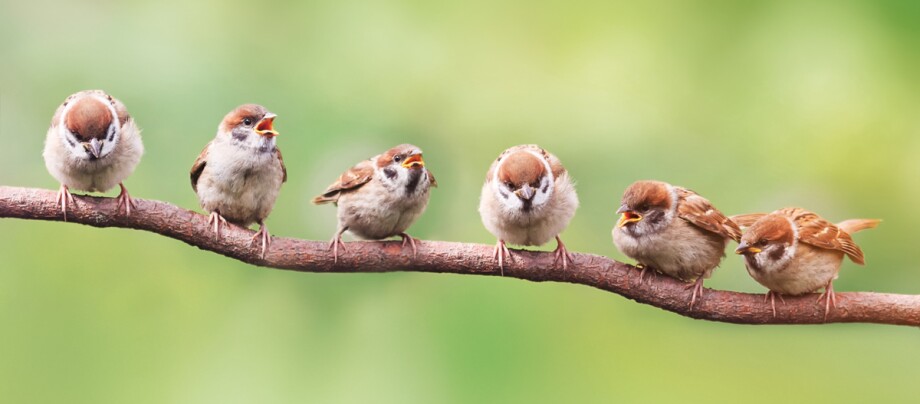
The sounds of tweeting, cooing, and cheeping are everywhere. Wild bird noises are an integral part of nature's background sounds. You've likely noticed when everything suddenly goes quiet outdoors, such as just before a storm.
Many wild bird species are generally heard rather than seen. Who can recognize a bird by its song without seeing it? Explore the forest, park, and garden to discover the hidden world of wild birds.
Attract Wild Birds with Food
If you want to observe wild birds in your garden, you can attract them with food and water. Breeding and rearing periods are energy-intensive for parent birds, who get the energy they need from food stations and feed protein-rich insects to their nestlings. A variety of dried insects, blanched in hot water, can be offered during breeding periods. The hot water makes them soft and prevents them from going bad quickly. Avoid fragments of nuts or large seeds like sunflower seeds. Bird parents spend most of their time finding suitable food for their chicks.
Tip: Never put out unsuitable food like bread or salty/sugary leftovers in a bird feeder. Provide high-quality food from brands offering deshelled seeds, which are better value for money and prevent birds from littering the garden with dropped seeds. You should also ensure the feed is ambrosia-free.
If you provide water dishes for wild birds, clean them with hot water daily. Multiple water sources can reduce bacterial load and limiting use can help reduce infection opportunities.
From Blackbirds to Wrens: Which Birds Can I Hear in My Garden?
There’s always activity around feeding stations and bird baths, all throughout the year. These are some birds that you might see, even if you live in an urban area.
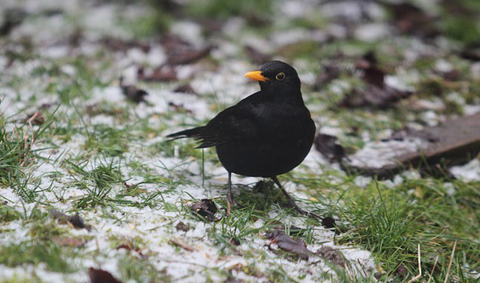
Blackbirds
Blackbirds are hard to miss. Their deep black color with orange beaks and distinctive song make them easily recognizable. Females have more modest brown feathers. They are best observed after rainfall, hunting earthworms in the grass.

Spotted woodpecker
This black and white bird with a red feathered cape is found in areas with old trees, including parks, cemeteries, and urban areas. Their drumming noise as they seek insect larvae under tree bark is unmistakable. Spotting them requires luck and a good eye, as they spend much time in tree tops..
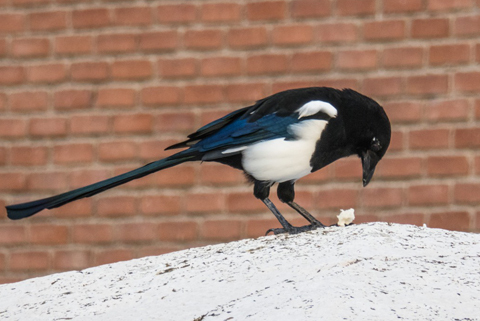
Magpie
Magpies are songbirds with mixed reputations due to swiping shiny objects and plundering smaller birds’ nests. They are usually found in larger groups, offering fascinating social interactions and incredible intelligence.
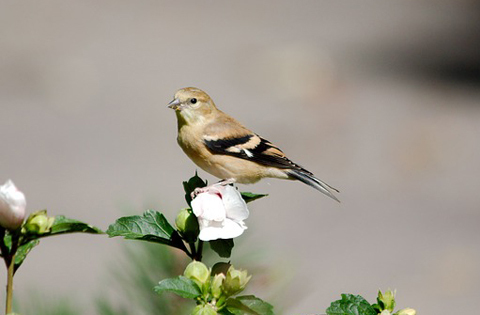
Finch
Greenfinch, chaffinch, and goldfinch can be distinguished by color: goldfinches have red faces, chaffinches have blue wing banding, and greenfinches have yellow-green feathers. All use powerful beaks to break open seeds.
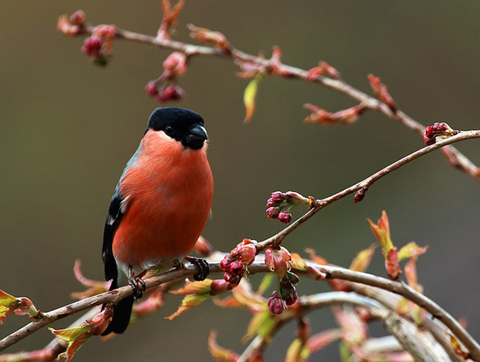
Bullfinch
Bullfinches, with bright pink breasts in males, have a round shape and a modest appearance. They enjoy feeding on flowers and berries with their powerful beaks.
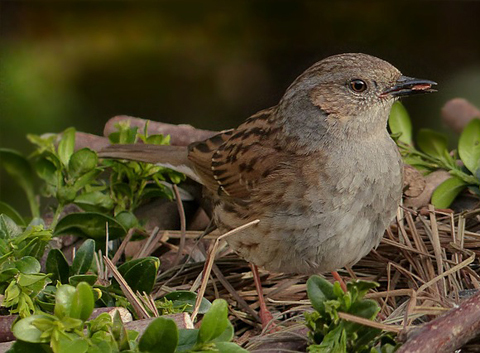
Hedge sparrow
Often seen only by chance and mistaken for mice, hedge sparrows master camouflage, hiding in bushes or tall plants while searching for beetles, insects, worms, and snails.

Great tit, blue tit, long-tailed tit
These well-known wild birds are compact, social, and not fearful of humans. They benefit from fat balls and nesting aids, making them popular garden visitors year-round
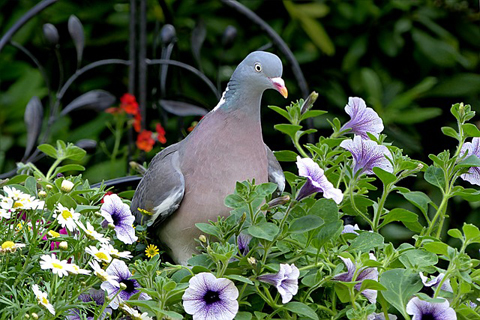
Wood pigeon
Fine gray animals with white collars and odd proportions, wood pigeons are the wild relatives of common urban pigeons, large native songbirds that can be very docile.
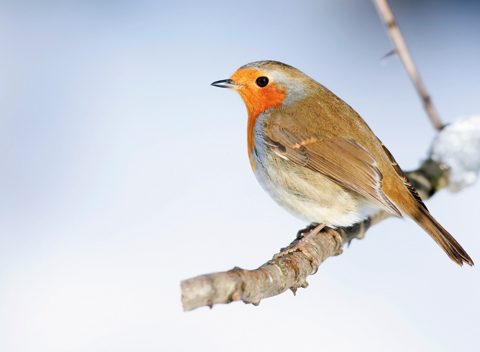
Andrew Howe / Stockbyte via Getty Images
Robin Redbreast
Robins, with their famous red bibs, are conspicuous and enchant with melodic songs. They feed primarily on insects and are highly territorial, not getting along well with other birds.
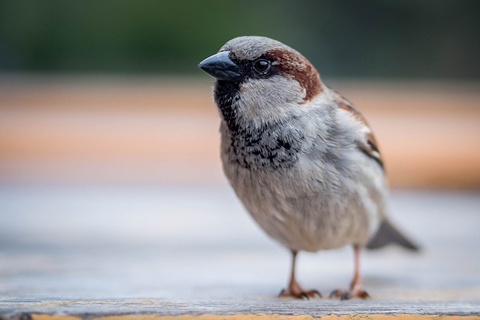
Shashilesh Binodia / iStock / Getty Images Plus via Getty Images
Sparrow
Common sparrows, whether house or tree sparrows, are decreasing in population due to difficulty finding breeding spaces and insects. These small brown-grey birds are always in groups and display characteristic fearlessness.
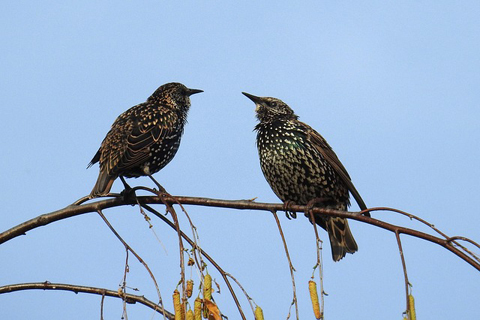
Starling
Dark feathers with beautiful shine and impressive singing talents make starlings a garden necessity. Sociable birds that can imitate voices, they enjoy fruits and berries.

Wren
Wrens, with blaring songs from high vantage points, are easily recognized by their small upward-pointing tails. These small round-shaped brown birds reign over their territory.
Enjoy exploring the fascinating world of garden birdlife, if you would like to feed your local birds you can find a fantastic range of feeding stations, food and more at your local Maxi Zoo shop.